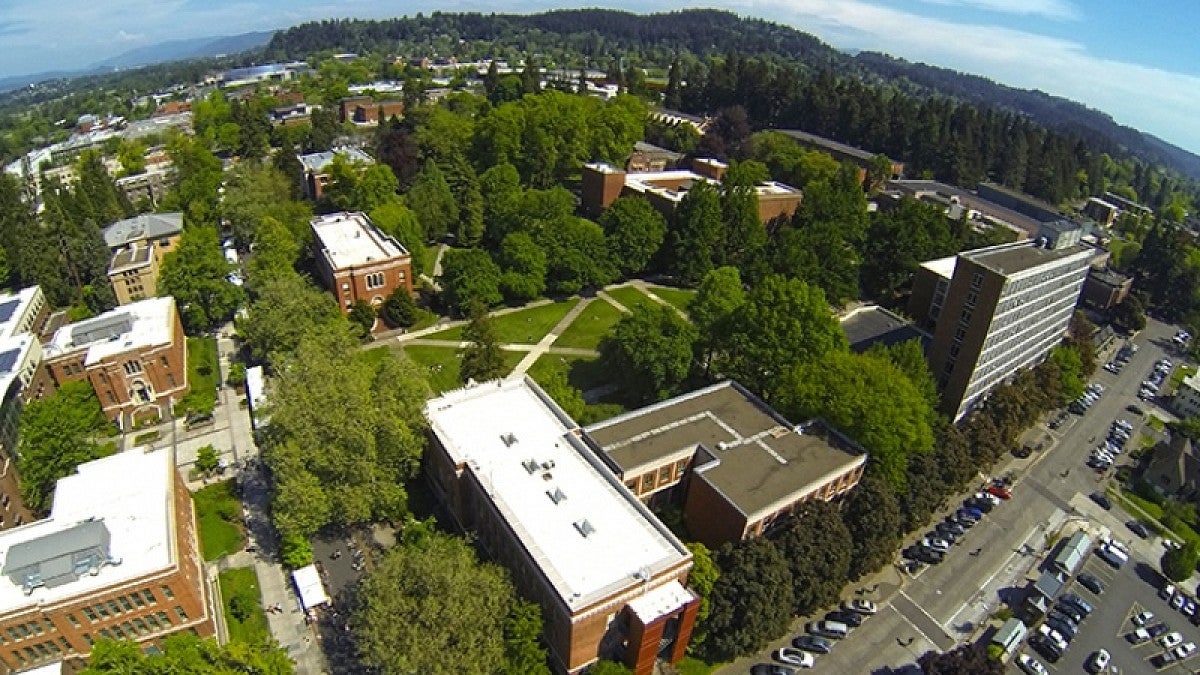University of Oregon leaders are working on plans to offer in-person, on-campus instruction for fall term at the UO, while working to safeguard the community and prevent the spread of coronavirus outbreaks.
In an announcement Monday, President Michael H. Schill said plans will be coordinated with local, state and national leaders as well as with other West Coast public universities.
“Given the realities of the COVID-19 crisis and the fact that there are numerous variables outside of our control, it is unlikely that our fall quarter will look just like last fall,” Schill said. “But I am committed to doing everything in my power to enable us to return to the type of residential university that is so special for all of us.”
Schill said the university will explore a variety of methods to safeguard the community, including reducing density in offices, residence halls and dining facilities; intensive cleaning of all facilities; and testing and contact tracing for students and employees.
“Our fall plans will comply with Gov. Kate Brown’s emerging strategy to reopen Oregon and will be informed by guidance from the Oregon Health Authority and Lane County Public Health,” he said. “Our planning will also continue to put student, faculty and staff health and safety at the forefront.”
André Le Duc, assistant vice president and chief resilience officer, will work with the university’s Incident Management Team, which includes more than 150 staff, faculty members and administrators, to help plan and facilitate the actions that must happen across campus to prepare for fall operations.
Schill said Provost Patrick Phillips has already begun working with deans and other academic leaders to ensure the university continues to deliver a high-quality educational experience and support for students. That group may consider alterations to class schedules, reductions in the size of some larger classes, changing room assignments to allow social distancing, and an expansion of high-quality online classes, among other adaptations.
In his message, Schill also addressed planning and contingencies for anticipated budget shortfalls due to the potential for the pandemic to hurt enrollment and state funding. Last week, Phillips and Jamie Moffitt, the chief financial officer, began outlining budget contingencies in a message to faculty and staff members.
The UO is tuition-dependent and Schill noted that national experts have estimated a 15 percent reduction in enrollment. The Oregon Higher Education Coordinating Commission also has instructed the UO to plan for the possibility of an initial 17 percent reduction in state appropriations next year.
“All of this points to the fact that we need to develop more operational and financial flexibility to deal with shocks to our budget,” Schill said. “The reality is that we will need to do something to adjust expenses if enrollment declines significantly and/or we receive state budget cuts. Again, we are open to suggestions and collaborative approaches designed to solve the problem.”
Schill also thanked faculty and staff members for mobilizing to meet the current needs of students and campus calling it “awe-inspiring and humbling.”
“I believe with all of my heart that we have the capacity to make the changes necessary for the University of Oregon to flourish,” he said.
—By Jennifer Winters, University Communications


